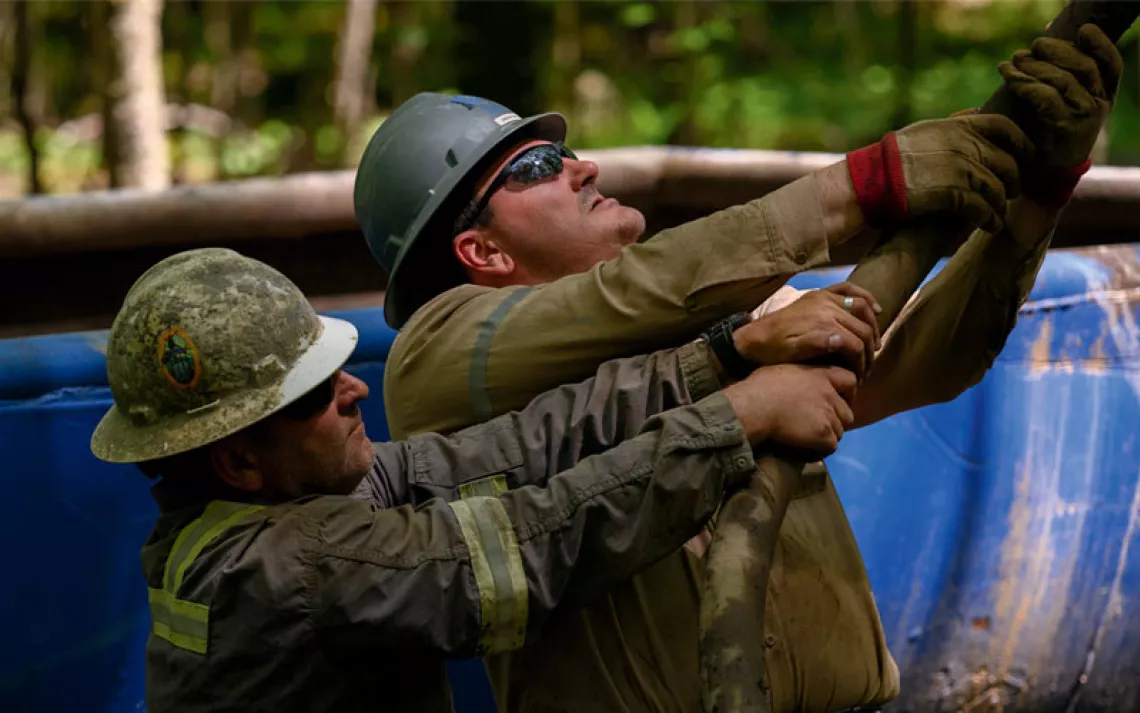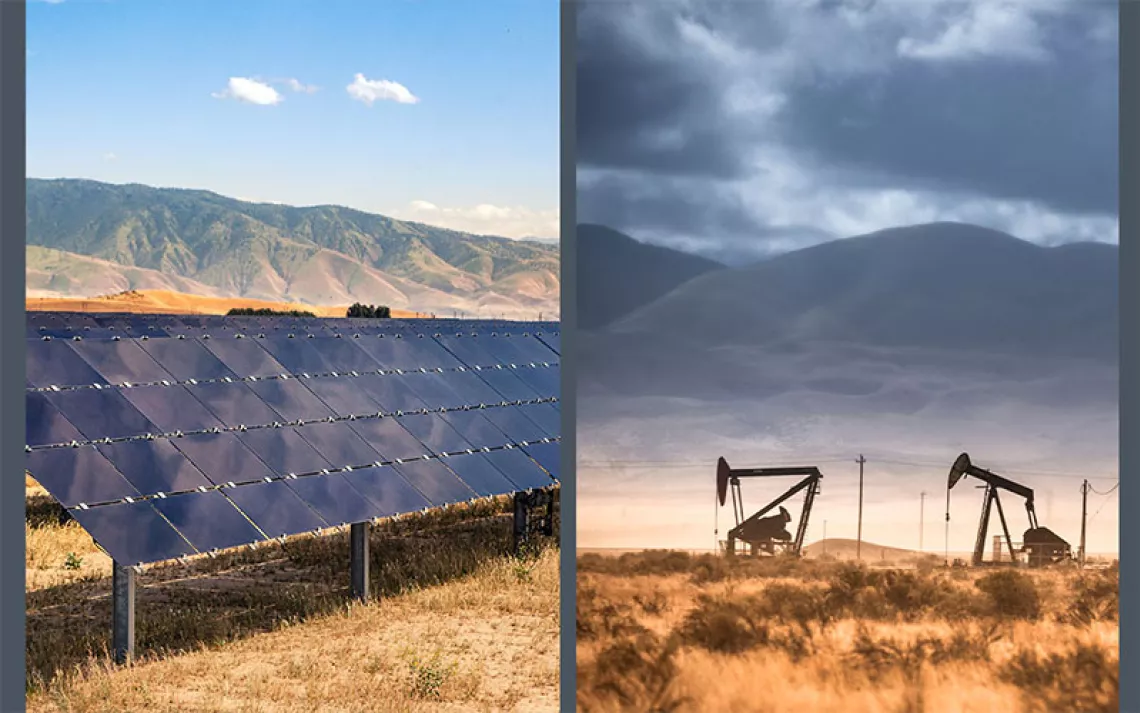Santa Barbara's Ordeal by Oil
From the archives of Sierra Club Bulletin

State forestry conservation crews clean up oil-soaked straw on the beach in Santa Barbara, February 6, 1969. | Photo by AP Photo/Wally Fong
Editorial note: This year marks the 50th anniversary of the Santa Barbara oil spill, a Union Oil blowout that was at the time the largest oil spill in US history (the Exxon Valdez disaster surpassed it 20 years later). To mark the anniversary, we are republishing the following archived news dispatch from Sierra Club Bulletin, the predecessor to Sierra magazine, which reported on the spill. The blowout took place on January 28, 1969, and lasted until February 7, dumping approximately 3 million gallons of crude oil into the ocean.
February 16, 1969—Officially, the upwelling of crude oil from Union Oil Company’s Platform A in the fault-fractured Santa Barbara Channel is stopped. But a fresh slick six miles long and 100 feet wide is bleeding from the drilling site, and federal water pollution officials overseeing the disaster aren’t leaving town yet.
Disaster struck on the anniversary of the issuance of federal oil leases in the channel—and the Interior Department’s year-old promise that “measures to prevent oil pollution and protect esthetic values will be effective.” Trouble began when Union Oil drillers on Platform A, six miles offshore, tapped an oil reservoir and gas dome at 3,500 feet. Gas and oil surged up with volcanic fury, and although the well was plugged, pressure forced oil out of fractures along Lands End fault (which Platform A straddles). Fed by an estimated 5,000 to 20,000 barrels a day, a slick covering 1,200 square miles or more cut the undersea environment off from life-giving sunlight.
Four days later, oil hit Santa Barbara’s sandy beaches. Cormorants preening their feathers ingested oil and died. A colony of western grebes was soaked in sludge. Townspeople gathered victims and volunteered at cleaning stations to bathe them in mild detergent. Of 1,400 birds brought in, nearly half of the larger ones have been saved—but the incidence of blindness from the cleaner is reportedly high. Smaller shore birds such as sanderlings, plovers, curlews, and sandpipers more often succumbed.
Anacapa Island, a unit of the projected Channel Islands National park, was soon surrounded by sludge. Seals on its shores kept out of the oil as long as they could. But the sea is their home, where their food is, and they returned to it.
In the Torrey Canyon disaster, chemicals used to disperse the oil did more ecological damage than the oil itself. But despite challenges by conservationsists, Union Oil turned to chemicals in frantic efforts to keep oil off the beaches. More than 150 chemical salesmen converged on Santa Barbara. Quizzed by oceanographers, a federal water pollution official conceded that he “didn’t know the formulation of the chemical” Union Oil used. When the manufacturer’s recommended dosage failed to disperse the gummy slick, Union Oil quadrupled the application—without success. Reliance was then placed upon mechanical controls, particularly the use of absorbent straw to sop up the oil before and after it reached the shore.
Local citizens reminded Interior Secretary Walter Hickel, after his survey of the disaster area in President Nixon’s private plane, that they had repeatedly sought stronger federal controls over oil development. Hickel conceded that the catastrophe was “as much the fault of the government as anyone.” Fred Hartley, president of Union Oil, was happy to agree: the trouble was, he told a congressional hearing, that “Mother Nature is letting the oil come up.”
In response to demands that drilling cease in the channel, Governor Ronald Reagan said that Santa Barbara should be prepared to accept a “happy balance” between development and shoreline beauty. “In a growing economy, there has to be some ‘give’ on the part of those who would just preserve the nature of the countryside.” Santa Barbara citizens feel they have already given more than enough.
It is too early for post-mortems; the damage is still being done. But it is already clear that the wildlife toll has barely begun to be counted, and that the environment will take years to recover. And an ominous fact emerges: the catastrophe could have occurred any day since drilling began, and it could happen again. The Texas specialists flown in to cap the well fought 11 offshore blowouts in 1968 alone, from the Persian Gulf to Venezuela. A member of the Texas crew put it bluntly: “Anyone who says he can guarantee his well won’t blow out is either nuts or lying. The only way to promise that is to promise not to drill.” This is the promise that citizens here are determined to get.
Santa Barbara is a community with a 40-year tradition of concern for the environment, and there is a sense of destiny in the determination of its citizenry to make the Platform A disaster a conservation turning point. At congressional hearings, conservationists will press again for the program they advocated 18 months ago: for the establishment of a Channel Islands National Park and the dedication of a marine sanctuary, where drilling will be prohibited, in the 26-mile-wide Santa Barbara Channel between the islands and the mainland shore. Our town, and neighbors who have suffered with us, have a historic opportunity to dramatize the nation’s need for a better and more livable environment.
 The Magazine of The Sierra Club
The Magazine of The Sierra Club



